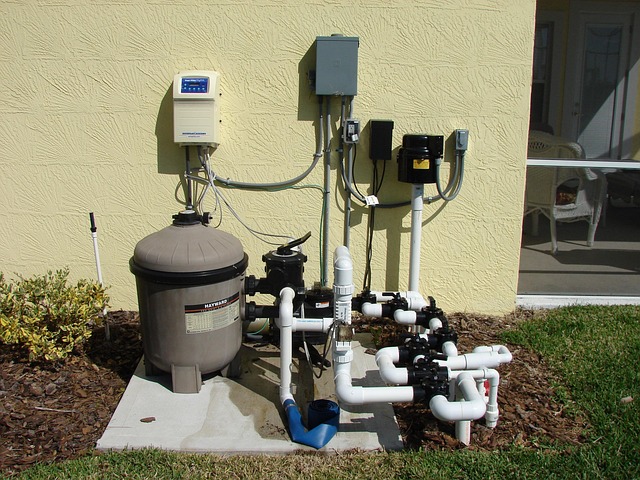Accident Insurance in the U.S.: Key Coverage Insights
Accident insurance in the United States provides financial support for unexpected injuries by offering coverage for medical costs, recovery expenses, and supplementary benefits. These plans help individuals manage out-of-pocket costs that may arise after accidental injuries.

Accidents are unpredictable events that can result in significant financial burdens beyond what traditional health insurance covers. From emergency room visits to rehabilitation costs, the expenses associated with accidental injuries can quickly accumulate. Accident insurance provides an additional layer of financial security, offering cash benefits that policyholders can use to cover medical deductibles, copayments, household bills, or any other expenses during recovery.
What Is Accident Insurance in the US?
Accident insurance in the US is a supplemental insurance product that pays benefits directly to the policyholder following a covered accidental injury. Unlike traditional health insurance, which reimburses healthcare providers, accident insurance typically provides lump-sum or scheduled payments based on the type and severity of the injury. These policies are designed to complement existing health coverage by addressing financial gaps such as deductibles, coinsurance, and non-medical expenses like transportation or childcare during recovery. Coverage typically includes injuries from falls, burns, fractures, dislocations, and other sudden, unintentional events.
How Does Accidental Injury Coverage Work?
Accidental injury coverage functions as a cash benefit policy that activates when the insured suffers a qualifying injury. After an accident occurs, the policyholder files a claim with documentation such as medical records or accident reports. Once approved, the insurance company disburses payment according to the policy schedule. For example, a broken bone might trigger a specific benefit amount, while an emergency room visit could result in a separate payment. These funds are paid directly to the insured and can be used at their discretion, whether for medical bills, mortgage payments, or everyday living expenses. The flexibility of these benefits makes accidental injury coverage a valuable financial tool during unexpected health crises.
Understanding Personal Accident Policies
Personal accident policies offer comprehensive protection against a wide range of accidental injuries and their financial consequences. These policies typically cover medical expenses, disability benefits, and sometimes accidental death benefits. Coverage extends to injuries sustained during everyday activities, sports, travel, and work-related incidents depending on the policy terms. Many personal accident policies include benefits for hospitalization, surgery, ambulance services, and follow-up care. Some plans also provide income replacement benefits if the injury prevents the policyholder from working temporarily or permanently. When evaluating personal accident policies, it is important to review exclusions, waiting periods, and benefit limits to ensure the coverage aligns with individual needs and circumstances.
What Are Hospital Indemnity Plans US?
Hospital indemnity plans US are specialized insurance products that provide fixed cash benefits for hospital stays and related services. These plans pay a predetermined amount per day of hospitalization, regardless of actual medical costs incurred. Benefits may also cover ICU stays, emergency room visits, outpatient surgeries, and diagnostic tests. Hospital indemnity plans work alongside major medical insurance, helping to offset high deductibles, copayments, and other out-of-pocket expenses that arise during hospital treatment. Because payments are made directly to the policyholder, the funds can be used for any purpose, including non-medical costs such as travel for family members, meal expenses, or lost wages. These plans are particularly valuable for individuals with high-deductible health plans who want additional financial protection against unexpected hospital bills.
Supplemental Accident Insurance Benefits
Supplemental accident insurance serves as an extra safety net beyond primary health coverage. This type of insurance is especially beneficial for individuals with high-deductible health plans, self-employed workers, or families seeking additional financial security. Benefits typically include coverage for emergency room visits, ambulance transportation, diagnostic imaging, fractures, dislocations, burns, lacerations requiring stitches, and follow-up care. Some policies also offer wellness benefits such as annual health screenings or preventive care incentives. Premiums for supplemental accident insurance are generally affordable, making it accessible for a wide range of budgets. Policyholders appreciate the straightforward claims process and the ability to use benefit payments without restrictions, providing financial flexibility during stressful recovery periods.
Cost Considerations and Provider Comparisons
The cost of accident insurance varies based on factors such as age, health status, coverage amount, and the insurance provider. Monthly premiums typically range from ten to fifty dollars per person, with family plans costing more. Benefit amounts and payout structures differ significantly among providers, making it essential to compare options carefully. Below is a general comparison of typical accident insurance offerings:
| Provider Type | Coverage Features | Estimated Monthly Cost |
|---|---|---|
| Employer-Sponsored Plans | Group rates, payroll deduction, basic injury benefits | $10 - $30 per person |
| Individual Market Policies | Customizable coverage, higher benefit limits, optional riders | $20 - $50 per person |
| Association or Membership Plans | Discounted group rates, limited coverage options | $15 - $35 per person |
Prices, rates, or cost estimates mentioned in this article are based on the latest available information but may change over time. Independent research is advised before making financial decisions.
When selecting a policy, consider factors beyond cost, including benefit schedules, exclusions, claim processing times, and customer service reputation. Some providers offer additional features such as telemedicine access, wellness programs, or accident prevention resources. Reviewing multiple quotes and understanding policy details ensures you choose coverage that meets your specific needs and budget.
Choosing the Right Coverage for Your Needs
Selecting appropriate accident insurance requires careful evaluation of your current health coverage, financial situation, and risk factors. Start by reviewing your existing health insurance policy to identify gaps in coverage, such as high deductibles or limited out-of-network benefits. Consider your lifestyle and activities that might increase accident risk, such as sports participation, frequent travel, or physically demanding work. Assess your financial reserves and determine how much out-of-pocket expense you could comfortably manage in an emergency. Compare multiple policies, paying close attention to benefit amounts, coverage exclusions, waiting periods, and renewal terms. Consulting with an insurance professional can provide personalized guidance and help clarify complex policy language. Ultimately, the right accident insurance should provide peace of mind and financial protection without straining your budget.
Accident insurance offers valuable financial protection that complements traditional health coverage by addressing out-of-pocket costs and providing flexible cash benefits. Whether through employer-sponsored plans, individual policies, or hospital indemnity coverage, these products help individuals and families manage the unexpected financial impact of accidental injuries. By understanding coverage options, comparing providers, and selecting policies that align with personal needs, you can build a comprehensive safety net that supports your financial well-being during challenging times.




